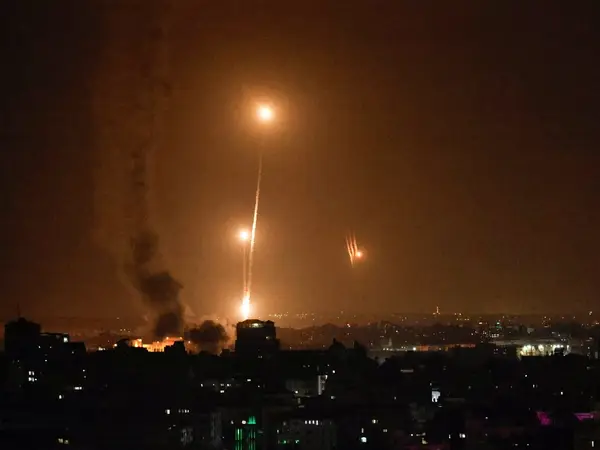In a significant turn of events, Iran has followed through on its threat to retaliate against a deadly strike on its consulate in Syria with a large-scale aerial assault on Israel. The strike, comprising drone and missile attacks, has sent shockwaves through the region, raising concerns of a potential escalation in the already tense Israel-Hamas conflict. Here’s a detailed look at how the situation has unfolded:
The Provocation: The sequence of events leading to Iran’s strike traces back to the attack on its consulate in Syria, which resulted in casualties. Iran swiftly blamed Israel for the assault, vowing retaliation and raising tensions in the region.
The Aerial Assault: On Saturday, Iran carried out a significant aerial strike on Israel, deploying both drones and missiles in what appears to be a coordinated military operation. The scale and precision of the attack have underscored Iran’s capabilities and intentions in the region.
Potential Escalation: The strike has heightened fears of a broader conflict in the Middle East. With Israel already engaged in a protracted conflict with Hamas, the addition of Iranian involvement further complicates the situation and raises the specter of wider regional instability.
Regional Dynamics: Iran’s involvement in direct military action against Israel marks a significant escalation in the long-standing tensions between the two countries. It also adds a new dimension to the complex web of alliances and rivalries in the Middle East, with potential implications for other regional actors.
International Response: The international community has reacted swiftly to the developments, with calls for de-escalation and restraint. Concerns about the potential for further violence and instability have prompted diplomatic efforts to defuse tensions and prevent the situation from spiraling out of control.
Implications for the Israel-Hamas Conflict: The timing of Iran’s strike, amid ongoing hostilities between Israel and Hamas, adds a layer of complexity to the conflict. It raises questions about potential shifts in alliances and strategies among the various actors involved and could influence the dynamics of the Israel-Hamas conflict going forward.
Uncertain Future: As the situation continues to evolve, the future remains uncertain. The possibility of further retaliation, counterattacks, or wider military confrontation looms large, casting a shadow over the already volatile region.
In conclusion, Iran’s strike on Israel represents a significant escalation in the ongoing tensions in the Middle East. The precise ramifications of this development remain to be seen, but one thing is clear: the stakes have been raised, and the path to de-escalation grows increasingly narrow. It is imperative for all parties involved to exercise restraint, engage in dialogue, and work towards a peaceful resolution to prevent further bloodshed and instability in the region.







Leave a Comment